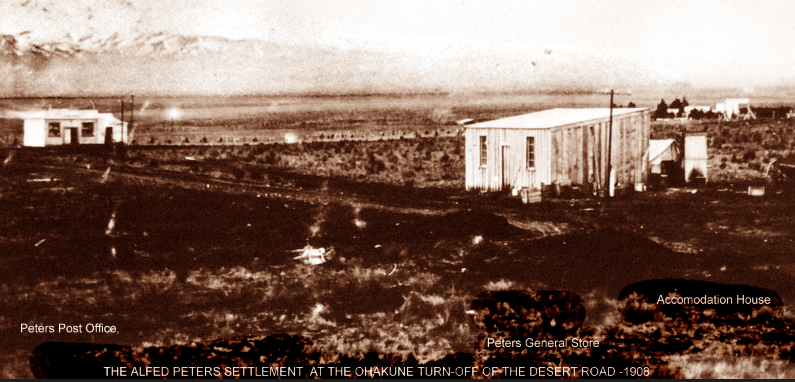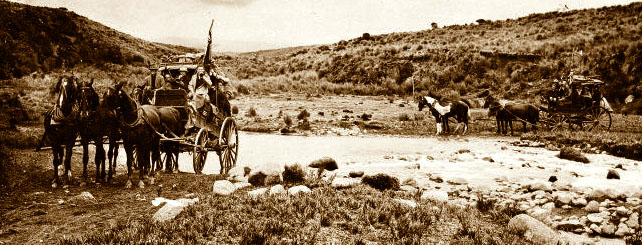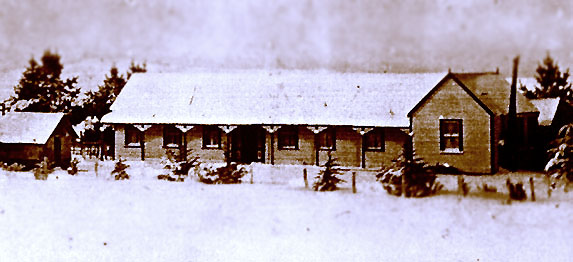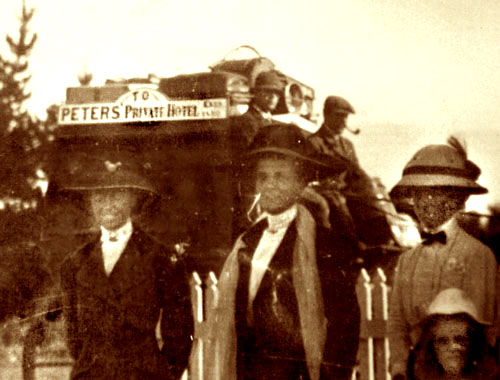Peters Coach ServicesAlf Peters ran his Cobb & Co type coaches between the railhead near Hunterville, the tourist resort at Tokaanu and the river steamer wharf at Pipiriki.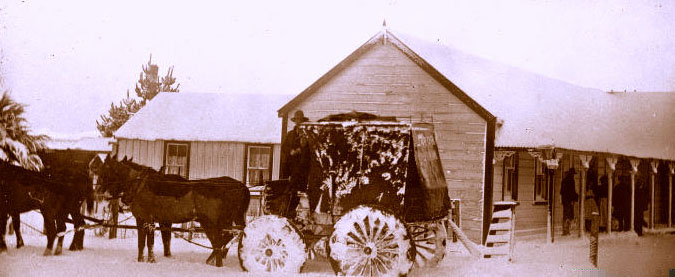
Peters coach leaving Waiouru for Tokaanu in 1908
In
1893, when the Hunterville-Tokaanu road was built,
connecting the Rangitikei district with roads to Taupo,
Napier and the Waikato, the firm of "A. Peters and
Sons" (now run by the sons, Alfred and Samuel,) was
based down in Moawhango, with coaches to Napier,
Manganoho, Pipiriki and Tokaanu, as well as guided horse
treks to the south side of Tongariro National Park.
The Peters family were experienced coach operators. In 1864 Andrew Peters, (who died at Napier in 1895) was running coaches between the Clutha and Invercargill. By 1876 Peters coaches ran from Napier to Taupo, and by the 1880s to Gisborne and Woodvile also. In 1891 Peters coaches began conveying tourists from Hatrick's steamboats at Pipiriki to the hot springs at Tokaanu.
For the next 14 years, Peters coach business was boosted by the hundreds of labourers building the roadbed, the viaducts, bridges and cuttings of the North Island Main Trunk railway. By 1905 the railhead had reached Turangarere (Mulvey's Corner) and there were 500 men working on the Waiouru section of the line.
But
when the NIMT finally opened in 1908, the railway
workers departed, and tourists to the Tokaanu Hot
Springs now travelled on a new coach road from
National Park railway station. Source. The National Library's Papers Past website. Time travelling activities.
18. The Waiouru railway bank |
